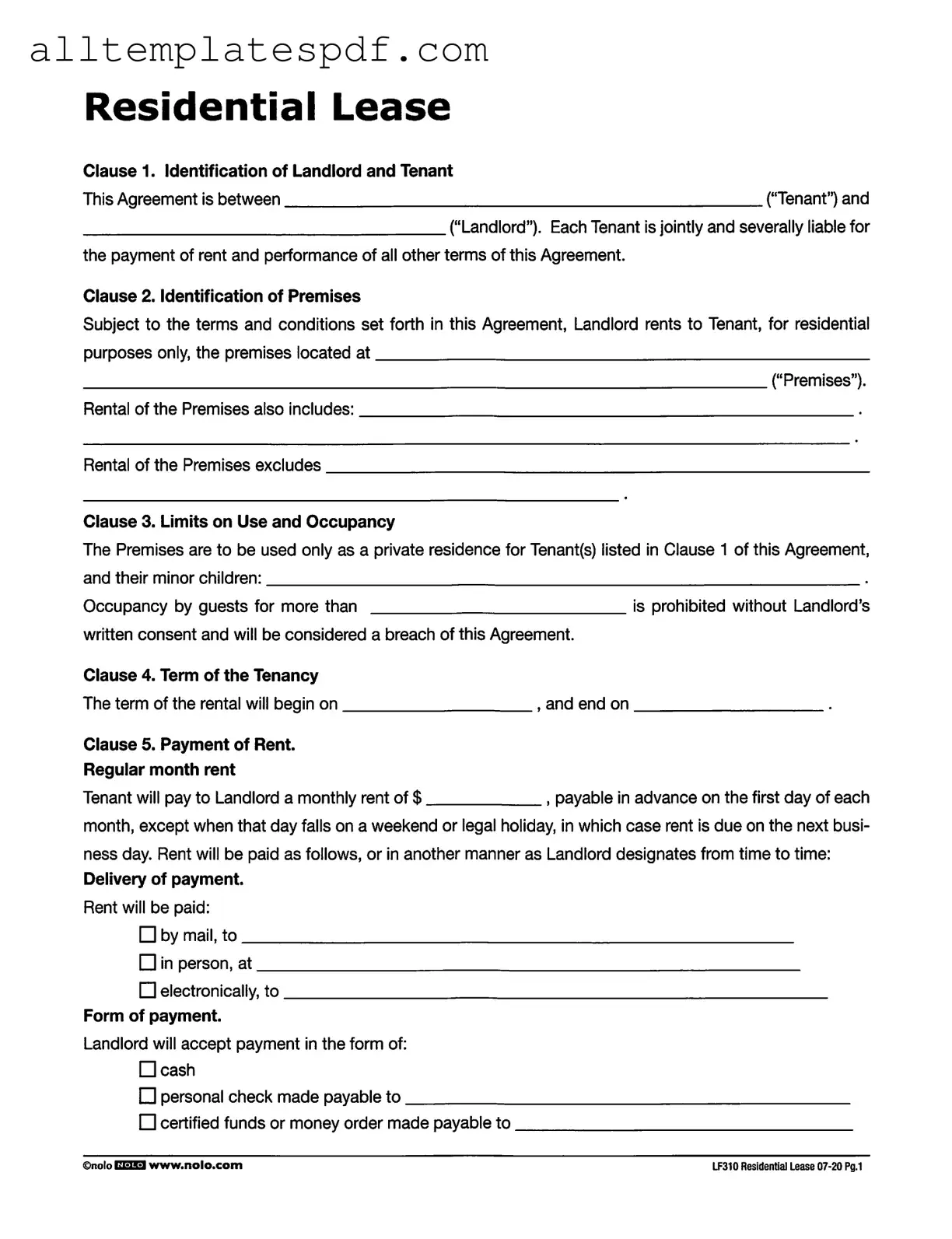Fill Out a Valid Lf310 Residential Lease Form
The LF310 Residential Lease form is a legal document that outlines the agreement between a landlord and tenant for renting a residential property. This form includes essential details such as the identification of both parties, the premises being rented, and the terms of payment. Understanding this form is crucial for both landlords and tenants to ensure a smooth rental experience.
Ready to fill out the LF310 Residential Lease form? Click the button below to get started!
Open Editor
